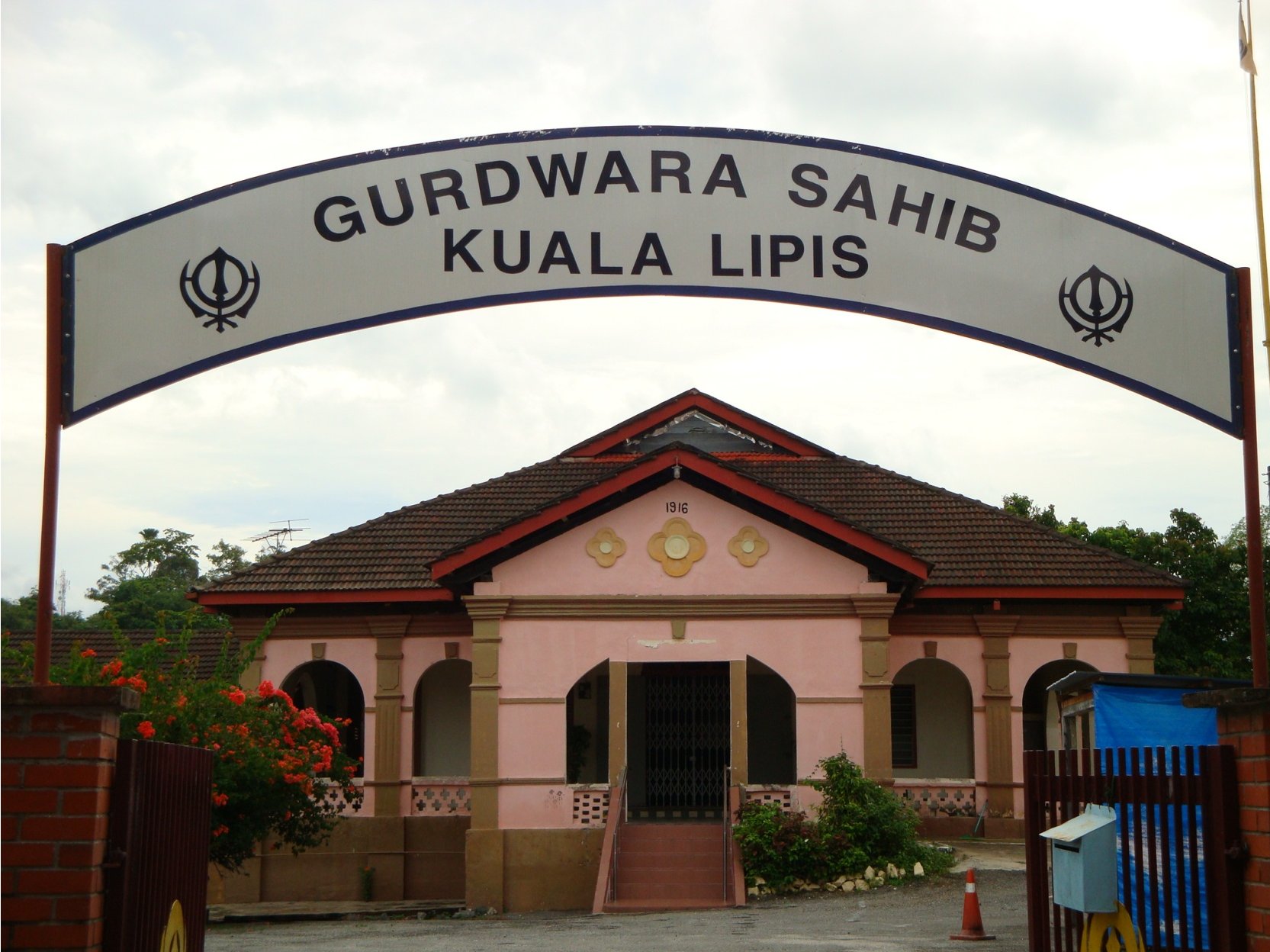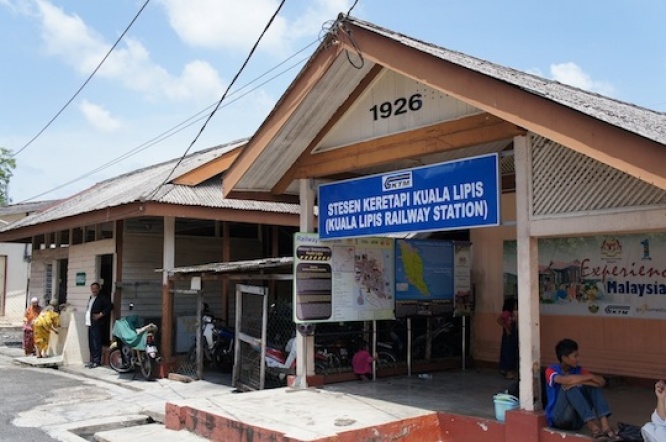
Formerly the Pahang state capital, Kuala Lipis is dotted by many historical buildings and structures of colonial architectures. Among them are:
1. Istana Hinggap ( 1926 )
Perched on top of a hill, it commands an excellent view of Kuala Lipis Town. This palace of Moorish architecture, built in 1926, was once the court of royal pomp and splendour. It was originally built for for British officers until the government introduced the chief minister's post on 1948. The building was renovated and facelifted to be the official residence of the chief minister.
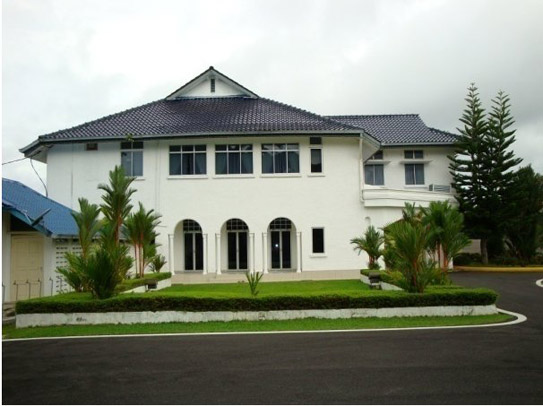
2. Lipis District Administration Building ( 1919 )
The building was completed on 1919 and was the administrative centre of Pahang. It holds the British Resident office and several administrative officers of Pahang on the top floor. On the bottom floor is the revenue collection office and the treasury of the British administration. Lipis was then the biggest district in Pahang. Its administrative area covered the whole distrtict of Jerantut and was blessed with lots of nature's treasure such as gold, charcoal, rubber and its forest's treasure.
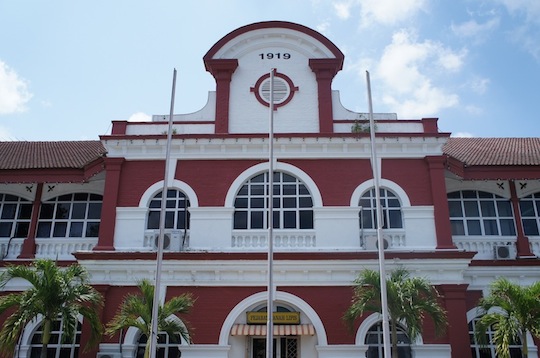
3. Residence of the District Officer ( 1929 )
It is located on the stockade of Orang Kaya Haji Wan Daud who took controlled the Lipis River. It was built on 1929. The site was previously the residence of the administrative officer, W.C.Mitchelll. He is also the assistance of Hugh Clifford.
The previous residence was destroyed during the mass flood. The British built a new house on the site which hosts the previous building. The design remains as it is until now. After the election in 1941, Tengku Mustapha bin Tengku Mohamad. The first district officer of Kuala Lipis, was the first Malay to live in the house. It remains to be the residence of the district officer until now.
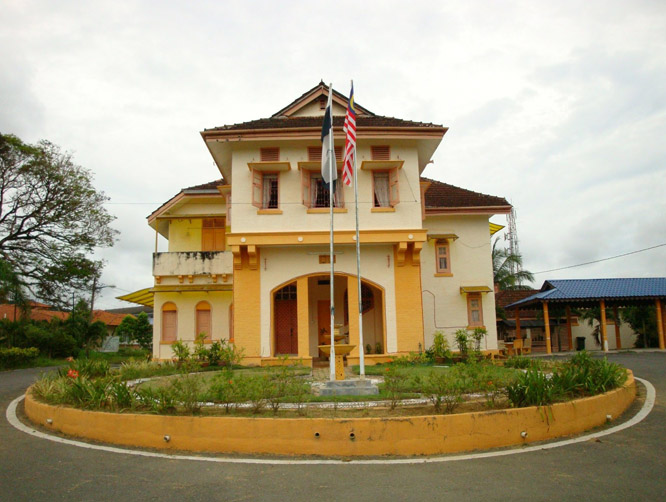
4. The Residency Building ( 1922 )
The Residency Building is located at the top of the highest hill in Kuala Lipis and was the residence of the British Residents of pahang until the outbreak of the second world war. It was also the first small museum in the state when a section of the buiilding was turned into a museum.
The building, erected in 1922, was first occupied by the famous Hugh Clfford, who was also the 'Superintendent of Ulu (Upper) Pahang'. Between 1958 and 1965 the building was used s a hostel for male students at the Clifford School. It was then left unoccupied until 1983 when it became the government rest house.
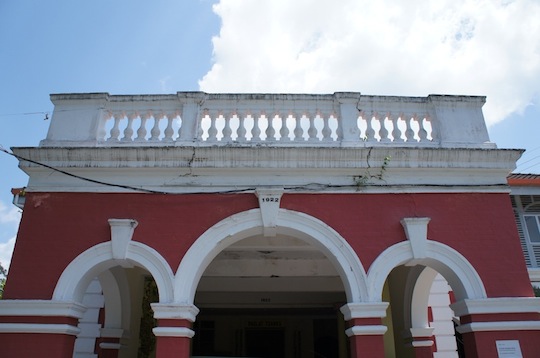
5. Clifford Secondary School ( 1913 )
The school was first known as the government English school and started operating on 1913. At first, it was a small hut on the banks of the Jelai River and was a home to 12 all male students. In 1918, the number of students has grown rapidly to 100 students and it was moved to its present ground.
Classes that was used during that time only consists of wooden buildings. Since it was the biggest educational institution in Pahang, the Malay Hostel and the main D block was built to accommodate the growing demand.
The official launching of the school was done by Sir Hugh Clifford, the ex-resident of Pahang. On 1926, he was appointed as the governor of the straits settlements and high commissioner of the federated Malay states. The school was named after him afterwards.
It was the first school certificate class on 1936, the first batch of students that sit for the school certificate was 11, out of that, 9 students passed. Besides being academically excellent. The school also excels in sports.
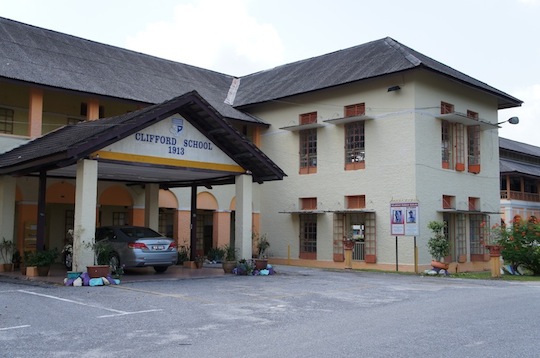
6. Malay Hostel ( 1926 )
The building was completed on 1926 and was the largest and most beautiful building in the school. Later, a wooden building was built near the building to support classrooms shortage in the school. Now that there is a hostel building present, Clifford Secondary School has become a boarding school in Kuala Lipis for Pahang resident.
The massive floods that occured in 1926 has destroyed the wooden building that was used for the classrooms. The Malay Hostel remained as it is. After the disasterous flood, ground floor of the building was renovated to accommodate the classroom to replace the ones destroyed by the flood. Due to the renovation, residents of the hostel have to move out. At the time, the education office had managed to secure the residental house and assigned it as a temporary hostel for the students.
During the Japanese occupation, the building was used as the biggest base camp for the Japanese army for their admiinistration. According to a source, Clifford Secondary School is the Japanese Army's Headquarters and the place to torture and execute their prisoners. Accoridng to Dato' Setia, YH Dato' Wan Abdul Rahman, the canteen and the main hall is the place where the Japanese beheaded their prisoners.
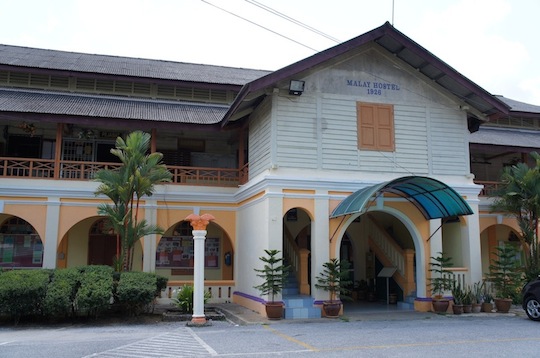
7. Railway Station ( 1926 )
Its service started on 1926, as a start, it connects Kuala Lipis to Johor Bharu on the South and Cegar Perah on the East and to Tumpat, Kelantan. It was the first means of land transportation in Kuala Lipis. During the Japanese occupation, the railway track was used as a route for the Japanese Army to the South to occupy Singapore. Besides being the main transportation for the locals, it is also being used to transport gold and charcoal.
The railway service has been through an evolution since it was introduced. It has benefited the locals as well as tourist. On the 1985, the railway service celebrated its 100th anniversary. A special train that was boarded by the high ranking officers of the railways made a journey from Johor Bharu to Tumpat and stopped in Kuala Lipis as an honour for the biggest and most historical railway station during its time.
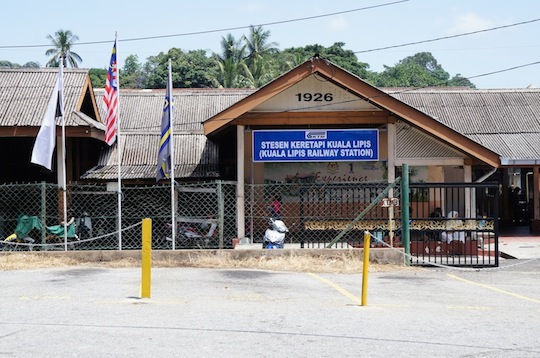
8. Nurse's Hostel
The building was constructed on 1926 and functions as a hostel for the nurses and trainess for the Lipis district's hospital. The existing structure didn't have any gates surrounding it. During the Japanese occupation, the building remains as it is because it functions as a vital component of the hospital. It has been through several modifications and renovations to form its current structure.

9. State Secretary's House ( 1920 )
The house was the residence of the State Secretary of Pahang. It was built on 1920 and it is situated near the residence of the chief Minister of Pahang. The house is located on the top of Bukit Bius, residental area on the hill.The present prime minister Dato' Sri Mohd Najib bin Tun Abdul Razak was born in this house. His father, the late Tun Abdul Razah bin Dato' Hussein stayed in this house during his services as the State Secretary of Pahang.

10. Pahang Club ( 1867 )
The building holds many historical values. Being the first building that was built by the British on 1867. It was also the first administrative site during their occupation in Pahang. The buiding was built as the house of Hugh Clifford who holds the title superintendent of Ulu Pahang during that time.
On June 1898, Kuala Lipis has replaced Pekan as the state capital. The house began to be the resident of the British resident.
During that time, Hugh Clifford was the resident. He was thinking about building a new house that will be strategically placed and easier for him to control the district. He found the resident hill to be the perfect place for his new home. While waiting for the new building to be completed, he stayed in the club house until 1922.
In the middle of 1926, the club house was left by the resident. The British asministration had turned it into an exclusive club for British high ranking officers. The original design and architecture was left intact without any modifications to preserve its originality. During that time, Pahang club was highly guarded. According to a source, not everyone can enter the club house. All entrants must be properly attired with neck ties to reflect their status. When it was was was left by the British, there were rumours that the club house will be turned into a palace but the proposal was rejected by the royalties.
On 1957, membership of the club was opened to royalties, British and government high ranking officers only. After the independence of Malaysia, its membership was opened to the public regardless of their race and hierarchy status. Commonly the club offers recreational activities such as tennis, badminton and sepak takraw. Besides that, it is also a place for communities projects.
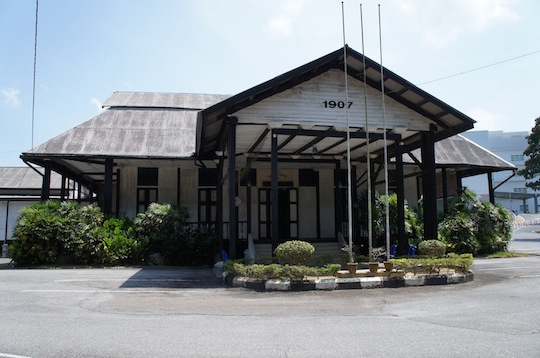
11. Post Office ( 1910 )
It is situated besides the main road, it was constructed on 1910. At first, the postal service is under the federal government. The building itself was shared with the telegraph service, a division of the telecommunication department. When the telecommunication department was fully privatized on 1889, the service had been shifted to the Telekom Malaysia's main buidling.
Initially, the main entrance of the building faces the main road. After the mass flood in 1971, it was moved to where it is now.
The postal service was privatized on the first of January 1992 and was known as Pos Malaysia until at present. During years of service, the building has gone through many modification until the recent upgrade on 2002. With combined effort of the manager and his staffs to beautify the building's surroundings and by giving the community excellent service, on 2004, Pos Malaysia Lipis has been recognized as the best post office in Malaysia.
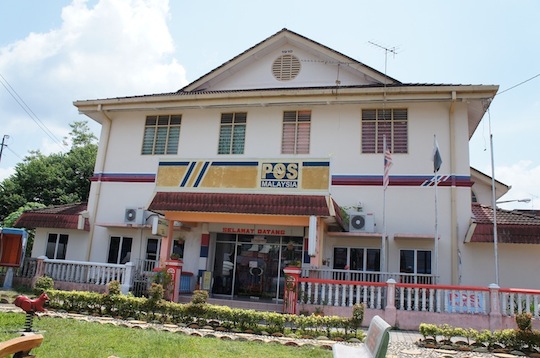
12. State's Mosque ( 1888 )
This mosque was built on 1888 by an Arab Yemen trader named Habib Hassan, The land which the building stands now also was docated by him. Initially, the roof was made by wood. The mosque is known as a state's mosque because Kuala Lipis used to be the state capital of Pahang before it was shifted to Kuantan. The first imam of the mosque is Imam Awang from Indonesia. According to the elders, one of the amazing stories of this mosque is it was never affected by the floods even though it is located near the river.

13. Thean Hou Temple ( 1898 )
The temple was built by the Buddist in Lipis. The effort was lead by the Kapitan that came from the Ong family. It is believed that the temple protects the fisherman thus its location is facing the Jelai river. The statue in the temple was originally brought from China. There is a carved stone on the temple that tells the story. On 1926, the mass flood occured and it caused severe damage to the temple's structure. It was rebuilt using a concrete structure and observed by the local authorities.The temple is situated in the middle of town and has become an attractive spot for local and international tourists.

14. Gudhwara Sahib Kuala Lipis ( 1916 )
The building was constructed on 1916 during the British Administration. It was built by the Sikh community that consisted of the British police, railway station workers and the British army. The existence of this building invited lots of Sikh to settle down here in Kuala Lipis. Although the number of Sikh community slowly decreases now, the building stands a s a proof of Sikh's first settlement in here.
